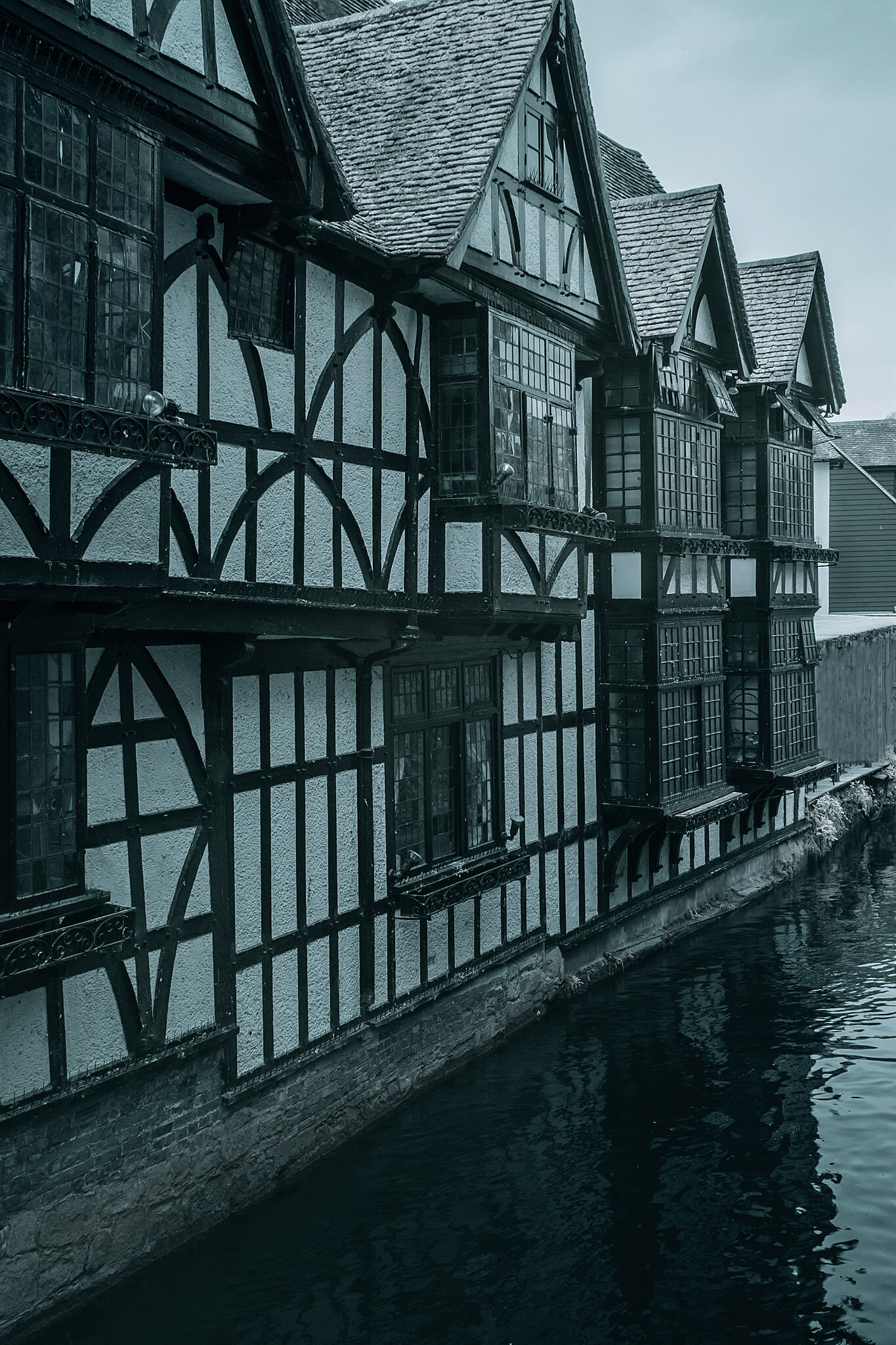Canterbury, South East, England

The lands of Canterbury have been occupied since at least the Iron Age. The area was then controlled by the Cantiaci, who were an Iron Age Belgic tribe, who established the town around 30 BC. A number of quarries, boundary ditches, round houses and gravel streets have been found through archaeology to date from this period.
The Romans further established the town, and created a military base at Canterbury after the invasion of Claudius. They named the town Durovernum Cantiacorum. In the early 2nd Century, they built a new city centre on top of the remains of the old Iron Age settlement. The town became a principal trading and administrative centre for the region. In the 3rd Century, Saxon raiders and increasing conflicts were the catalyst for a wall being built around the city.
The Romans left the area in the early 5th Century, and the area was settled by the Jutes, who were a Germanic tribe. They established the kingdom of Kent soon after their arrival. Canterbury was then known as Cantwara-burh, meaning the fortified town of the men of Kent. Canterbury became the Capital of the new Kingdom of Kent, and was ruled by King Ethelbert from the end of the 6th Century. It was around this time that St. Augustine arrived in Canterbury and set about converting the townspeople to Christianity. St. Augustine is said to have baptised 10,000 people in just a few months, one of them was King Ethelbert.
By the 9th Century, Canterbury was established as the centre of the English church, and it suffered a series of attacks by Viking raiders from the mid- 9th Century to the early 11th. The city's wealth continued to attract Viking raiders, and the city was completely ransacked in both 842 and 851. In 1011, the city was under siege and held out for twenty days, but the Cathedral and most of the city was set on fire. The population of around 8,000, were killed, ransomed or enslaved.
When the Normans (NorseMen) arrived again in 1066, within living memory of the horrors that had been inflicted on Canterbury, the townspeople made no attempt to interfere.
By the 12th Century, Canterbury was flourishing. Industries such as milling, tanning, fulling and dyeing had become established, which took advantage of the numerous waterways for power, transport and drainage.
After the rise in early tourism, otherwise known as pilgrimages, Canterbury further prospered. It was not just the Cathedral that prospered by attracting pilgrims; the local townspeople could also find work in catering to their needs. Pilgrims Way ran from Winchester to Canterbury and still exists today. For those who would like a full medieval experience, it is approximately a 12 days walk and maps of the route are available, as are tourist companies who specialise in this area. Chaucer’s Pilgrims walked along Pilgrim’s way on route to Canterbury.
The Black Death hit Canterbury hard in 1348, when Canterbury is thought to have had a population of around 10,000. While we don’t have any exact numbers, we do know that 200 years later the population was only 3,000. The 14th Century also saw the rebuilding of the town wall, as the Roman wall had fallen into decay. It was substantially rebuilt, with towers and gates being added.
The Canterbury Tales is a collection of 24 short stories, which were originally written in Middle English, by Geoffrey Chaucer at the end of the 14th Century. The Canterbury Tales is the work he is best known for, and he was the first writer to be buried, in what has become known as Poet’s Corner, inside Westminster Abbey. Chaucer worked in the civil service and also had a career as a bureaucratic courtier, and Member of Parliament. He was married to Pilippa Roet, who was the sister of Katherine Swynford. Katherine was the mistress, and later wife, of John of Gaunt, (father of Henry IV), and their children together created the Beaufort line. It is thought that Geoffrey met his wife while they were both in the service of Queen Philippa, wife of Edward III. The Canterbury Tales was possibly never completed, but the premise of the work is a group, traveling to Canterbury on pilgrimage, who tell stories to each other to pass the time along their journey.







